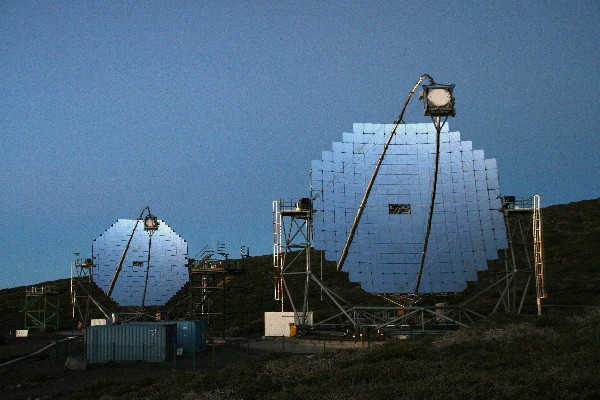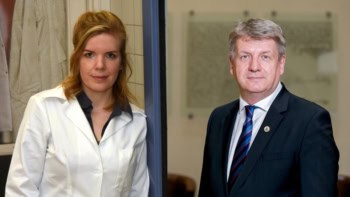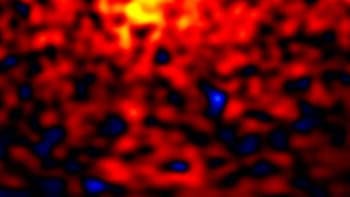
A telescope in the Canary Islands that is designed to study the most violent events in the universe is due to mark its “first light” at a ceremony tomorrow. Built at an altitude of 2200 m on the Taburiente volcano, the second Major Atmospheric Gamma Imaging Cherenkov (MAGIC-II) telescope is situated 85 m away from its predecessor MAGIC-I. A special scientific programme about the telescope’s work is taking place later today
MAGIC-II can detect the light produced when gamma rays with energies of about 25 GeV created by gamma-ray bursts, active galactic nuclei and supernova remnants interact with the Earth’s atmosphere. Known as Cerenkov radiation, these flashes of blue light occur when a charged particle travels faster than the speed of light in its medium. Studying this radiation enables physicists to detect the source of gamma rays emitted by celestial objects and thus pinpoint their locations in space.
MAGIC-II will work alongside MAGIC-I – both having 17 m diameter mirrors – but the combination of the two telescopes will be three times more sensitive than MAGIC-I alone. When a satellite such as NASA’s Fermi Gamma-ray Space Telescope detects a gamma-ray burst, it alerts a system on the ground so the telescopes can Robert Wagner, Max Planck Institute for Physics point to the emission and study the remnant Cerenkov radiation.
“In addition to being the world’s largest system of this kind, MAGIC-I and MAGIC-II can rotate within 40 s towards the point of emission,” says Masahiro Teshima, spokesperson for MAGIC-II and a director at the Max Plank Institute for Physics in Munich, Germany.
Focussing a dark art
MAGIC-I has yielded important results in high-energy physics, such as the discovery of high-energy gamma rays from quasar 3C279, which implied that the universe is more transparent to high-energy photons than expected. But one important advantage of MAGIC-II, explains Teshima, is that the system will provide a 3D reconstruction of the secondary showers produced by gamma rays in the atmosphere. This will improve the signal-to-noise ratio in observing gamma rays and allow fainter sources to be detected.
Since the facility’s threshold energy in gamma-ray detection is several times lower than its competitors – the High Energy Stereoscopic system (HESS) in Namibia and the Very Energetic Radiation Imaging Telescope Array System (VERITAS) in Southern Arizona in the US – physicists think it will make important discoveries in this range. “The greatest contribution may come in the discovery of sources at energies below 100 GeV and the facility’s excellent capabilities for rapid follow-up of gamma-ray bursts may lead to some unexpected breakthroughs,” says René Ong, VERITAS spokesperson.
About 150 scientists are expected to use MAGIC-II, many of them working in the nine countries that funded the telescope, which include Germany, Italy, Spain and the US. First results are expected in the early summer.




